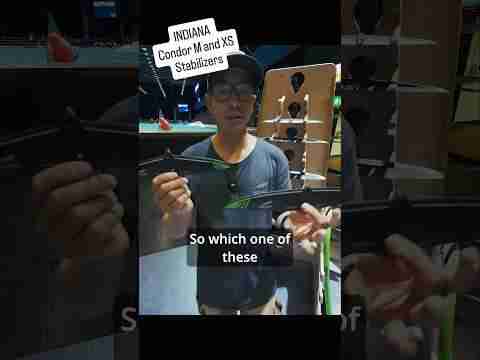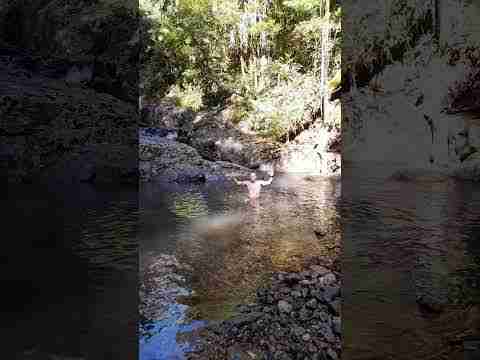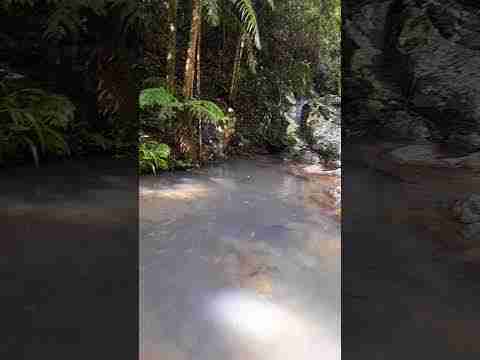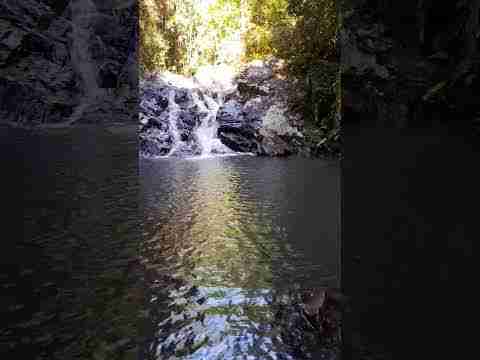[please login to make this ad block disappear]
Independent Review: Kayalu Kayalite stern light
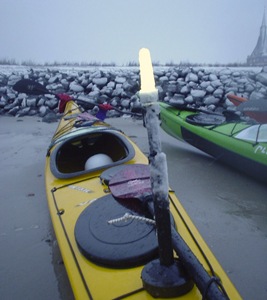 The Kayalite Stern Light is a 360 degree white light mounted on top of a 45 cm ABS plastic pole. Kayalite claims to offer a “premium grade, virtually loss-proof and indestructible” solution for the lighting on kayaks, canoes and other small watercrafts like dinghies and RIB/RHIB inflatables. The light itself is the Mark III by Tektite. The Mark III is a single LED bulb powered by 3 AA batteries, originally designed for diving, submersible to 1000 feet (300 meters). It should burn over 200+ hours on one package of batteries. The main innovative element of the Kayalite system is the method by which it attaches to the kayak. The design uses a bungee and hook system so it will attach to either an eyelet , deckline or bungee on the deck of your kayak.
The Kayalite Stern Light is a 360 degree white light mounted on top of a 45 cm ABS plastic pole. Kayalite claims to offer a “premium grade, virtually loss-proof and indestructible” solution for the lighting on kayaks, canoes and other small watercrafts like dinghies and RIB/RHIB inflatables. The light itself is the Mark III by Tektite. The Mark III is a single LED bulb powered by 3 AA batteries, originally designed for diving, submersible to 1000 feet (300 meters). It should burn over 200+ hours on one package of batteries. The main innovative element of the Kayalite system is the method by which it attaches to the kayak. The design uses a bungee and hook system so it will attach to either an eyelet , deckline or bungee on the deck of your kayak.
Playak tested the Kayalite over a period of 8 months extensively during seakayak trips and night-paddles in Holland, Germany and Wales. The Kayalite got through sea and surf in winter and summer conditions, at temperatures from minus 10 to plus 30 degrees Celsius.
Night paddling – the design brief
As a regular night paddler, the mounting of a light on the kayak has been an issue for a long time for me. Like a lot of paddlers I experimented with a range of battery lights and mounting-constructions, in an effort to create a simple, compact and reliable solution. None of the home-made productions was really successful. Visibility, reliability, handling and half way meeting the regulations proved to be a difficult combination. I say knowingly “meeting half way “the regulations: not to encourage civil disobedience, but to be realistic about what the regulations say and what is practicable and wise. There are slight differences between the regulations on open sea, coastal waters, rivers, lakes and canals, most regulations however demand a “white 360 degree round shining light” on a human powered vessel like a kayak. It’s the obligation of “all directions round shining” that makes the light issue on a kayak complicated. First of all it’s difficult to realize: you’ll need a construction of at least 80 cm high to shine over the paddler sitting in his cockpit. And then, if you succeed to realize it, the next problem appears: the impact of a round shining light on the nightvision of the paddler.
At the risk of laboring the obvious: you mount a light on the kayak to be seen by others, not to see by yourself: except on the darkest nights it’s surprising how well you can see once your eyes are accommodated to the darkness. But this nightvision is easily disturbed by the light on your kayak. You need a light that shines in many directions but is covered in forward direction, preventing reflections in front of you.
On busy water it’s often the question if you want to be seen (to let the other traffic know that you are there), or if you don’t want to be seen at all (so no one points a searchlight at you and blinds you). What to do depends on the situation and can change any moment. You need a light that you can easily switch on and off sitting in the kayak.
Finally you need a light that’s easy to attach to the kayak, but also stays firmly in place in case of a wanted or unwanted capsize, that is waterproof and salt-water resistant.
Let’s check if the Kayalite meets these requirements!
Night paddling – the Kayalite in use
All that is needed to mount the Kayalite on a kayak is a deckline or an eyelet. When there is one of these provisions on deck (which will be so on most touring- and seakayaks), clipping the light on and tightening the bungee down is just a matter of seconds. Once fitted the unit is held snug to the boat. The large base prevents the light from tipping over. Attached to an elastic deckline there is some play in the construction, but even this proved to be very solid: the Kayalite stood the test in braking waves, in dumping surf, and during rolling sessions at night: the light wobbled sometimes, but always ended up upright.
On the pictures above the Kayalite is positioned close to the stern of the kayak, behind the oval deck hatch. It’s better to position the light closer to the cockpit of the kayak, so you can reach to the light. But at the time when these pictures were taken, I carried a pair of spare paddles that covered the deck closer to the cockpit.
I noticed that the closer the Kayalite is positioned to the paddler, the better the paddlers upper body shadows the craft’s bow from illumination. On the other hand: the farther away from the paddler the light is positioned, the better is the visibility of the light for vessels approaching from frontal angles. In both positions I found the effect on night vision for the paddler himself marginal. Paddling close together in a group is another story, I suggest the Kayalite only to be switched on at the rear boat, because of the effect on the nightvision for the other members of the group.
Overall the height of 45 cm proved to be a good choice. The light isn’t hidden from view by waves as shorter lights are likely to do, but is also not so tall that it shines over your shoulder and hinders your nightvision. The visibility of the kayak with this Kayalite was impressive, not only in total darkness, but especially in the twilight. On an open crossing at sea with two groups of seven kayaks on a remote distance of each other, the kayaks of the first group soon became invisible for the second group in the dusk of evening, only the kayak with the Kayalite switched on was always visible.
The Kayalite proved to be durable and reliable. After 8 months of intensive use the unit still works perfect and looks as new. The metal pieces show no signs of corrosion, the bungee no signs of wear. I replaced the batteries after 6 months. I didn’t count the burning hours of the lamp, it sure were quite a lot: I didn’t only use the Kayalite as a kayak-light, but also as tent- light at night….
Conclusion:
The Kayalite has become my standard companion on evening and night paddles. It’s simple, solid, and reliable. The design with the large cushioned base, the pole with an integrated bungee and the hook system works perfect. It’s good to know that the Kayalite floats, just in case you accidently drop it in the water (only a pity it’s all black so you won’t probably find it at night if you drop it (switched of) in the dark water – I don’t want to lose this perfect piece of kit!).
More information:
On the website of the manufacturer: http://www.kayalu.com (In the FAQ-chapter on the Kayalite website you find helpful resources about night paddling in general, about the SOLAS and USCG regulations and about the use and design of the Kayalite).
For Playak,
Hans Heupink
Login to post here



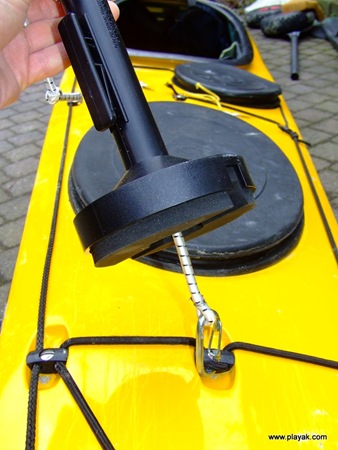
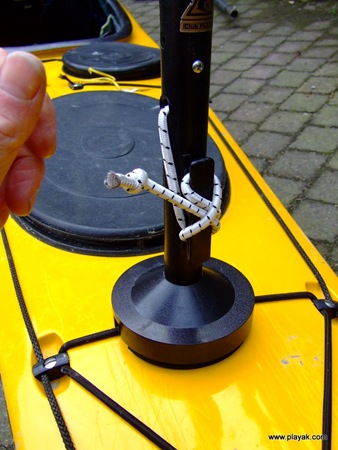
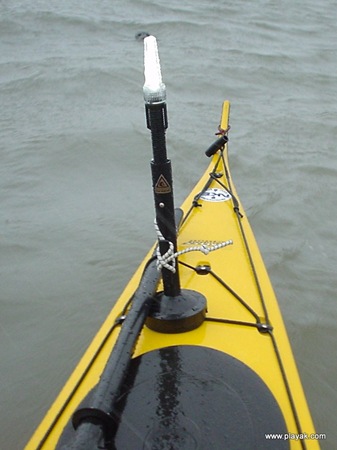
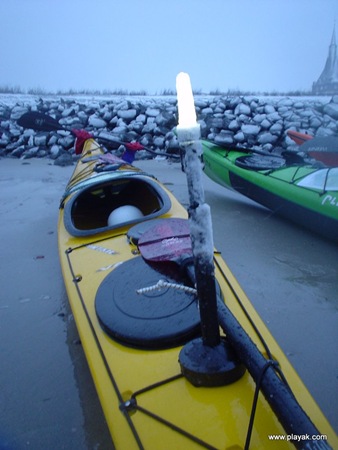









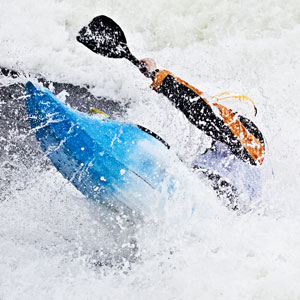 Get for free:
Get for free:

